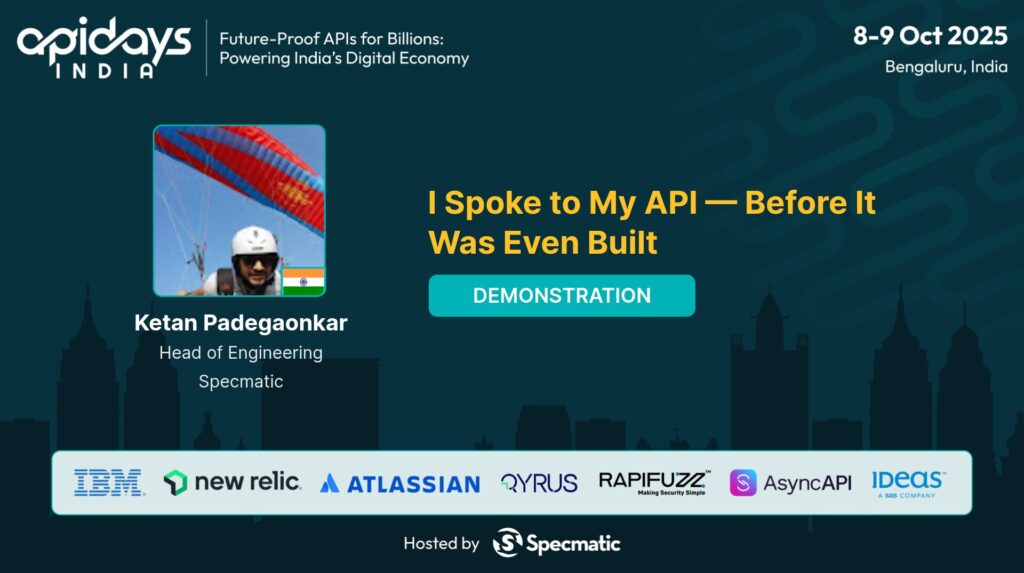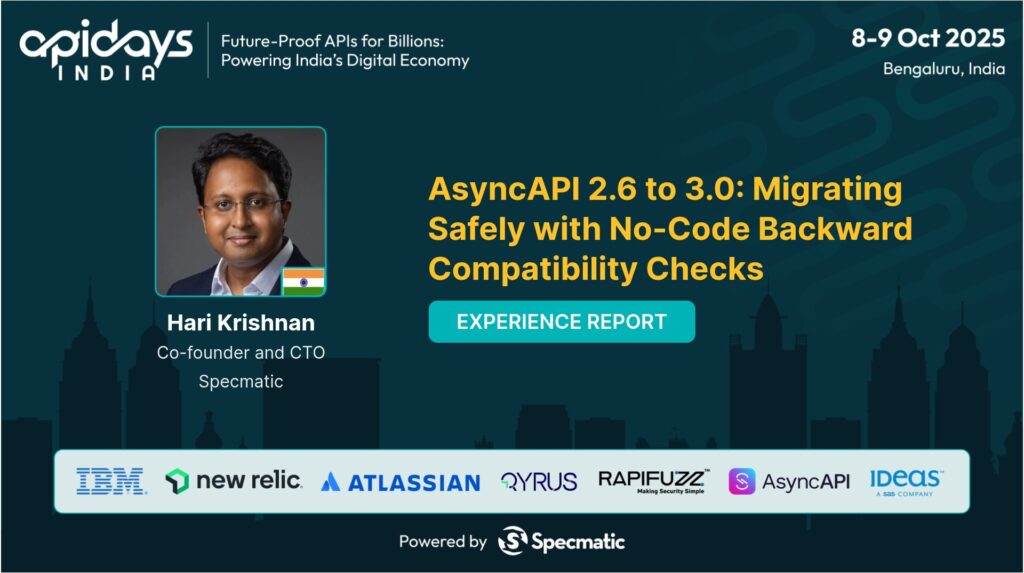The Functional Fix: Kotlin Error Handling Made Elegant
29 Jan 2025
Online
Summary
Error handling in software design often devolves into procedural code riddled with nested conditionals and complex workflows, making systems hard to test, maintain, and scale. Railway Oriented Programming (ROP) offers a structured, functional paradigm that clearly separates success and failure paths, enabling developers to simplify workflows and build more maintainable systems. This talk takes a step-by-step approach to refactoring procedural Kotlin code into a declarative, functional style using Kotlin and Arrow KT.
Drawing from my experience with Kotlin in Specmatic, we will explore real-world examples that highlight how Kotlin’s type system, extension functions, and immutability features can simplify error handling and empower developers to build maintainable, predictable systems. A special focus will be placed on the practical application of the Either monad in this context. Attendees will walk away with actionable steps to refactor procedural code into functional pipelines, improving readability, testability, and maintainability.
Transcript
Elevating Error Handling in Kotlin: Embracing Railway Oriented Programming
In the world of software development, error handling can often become a tangled mess of conditionals and verbose code. In this blog, I share my journey of transforming procedural error handling in Kotlin into a clean, functional approach using Railway Oriented Programming (ROP). By focusing on separating success and failure paths, we can create elegant, maintainable code that enhances both readability and testability.
Table of Contents
- Introduction to the Session
- About the Speaker
- The Problem with Traditional Error Handling
- Understanding Stubbing in HTTP Requests
- The Mental Model of Error Handling
- Introducing Railway Oriented Programming
- The Two Track Analogy Explained
- Code Walkthrough: Initial Implementation
- Refactoring to a Functional Approach
- Method Extraction for Composability
- Introducing the ‘Then’ Operator
- Utilizing ArrowKT for Enhanced Functionality
- Flat Map and Fold: Key Concepts in Monads
- Final Implementation and Reflections
- Q&A Session: Addressing Disadvantages of ROP
- Conclusion and Resources
- FAQ Section
Introduction to the Session
Welcome to our deep dive into Kotlin error handling. This session focuses on transforming how we approach error handling in our code. By leveraging Railway Oriented Programming, we can create a more structured and elegant way to manage errors, moving beyond traditional methods that often lead to confusion.
About the Speaker
Harry Krishnan is a seasoned expert in the field of software development. As the co-founder and CTO of Specmatic, he brings years of experience in API governance and transformation strategies. Harry is not just a developer; he is a community advocate, actively participating in conferences and sharing knowledge. His passion lies in making complex systems easier to understand and work with.
The Problem with Traditional Error Handling
Traditional error handling often leads to a tangled web of conditionals, making code difficult to read and maintain. In many cases, success is merely defined by the absence of failure, which doesn’t provide a clear picture of what successful execution looks like. This approach can create a dissonance between the intended happy path and the actual implementation.
- Confusing Logic: The focus tends to be on failures, overshadowing successful outcomes.
- Reduced Readability: Complex nested conditionals can make the codebase hard to navigate.
- Difficulty in Testing: Testing becomes cumbersome when success paths are not clearly defined.
Understanding Stubbing in HTTP Requests
Stubbing is a crucial technique in API development, allowing developers to simulate responses from an API without needing the actual service to be available. This is particularly useful in testing environments where you want to validate your code against expected behavior.
To create an effective HTTP stub server, you must first model the incoming requests based on the OpenAPI specification. This involves defining key elements like the URL, method, and body. Once you’ve set up your stubbing mechanism, you can begin to match incoming requests against the predefined criteria.
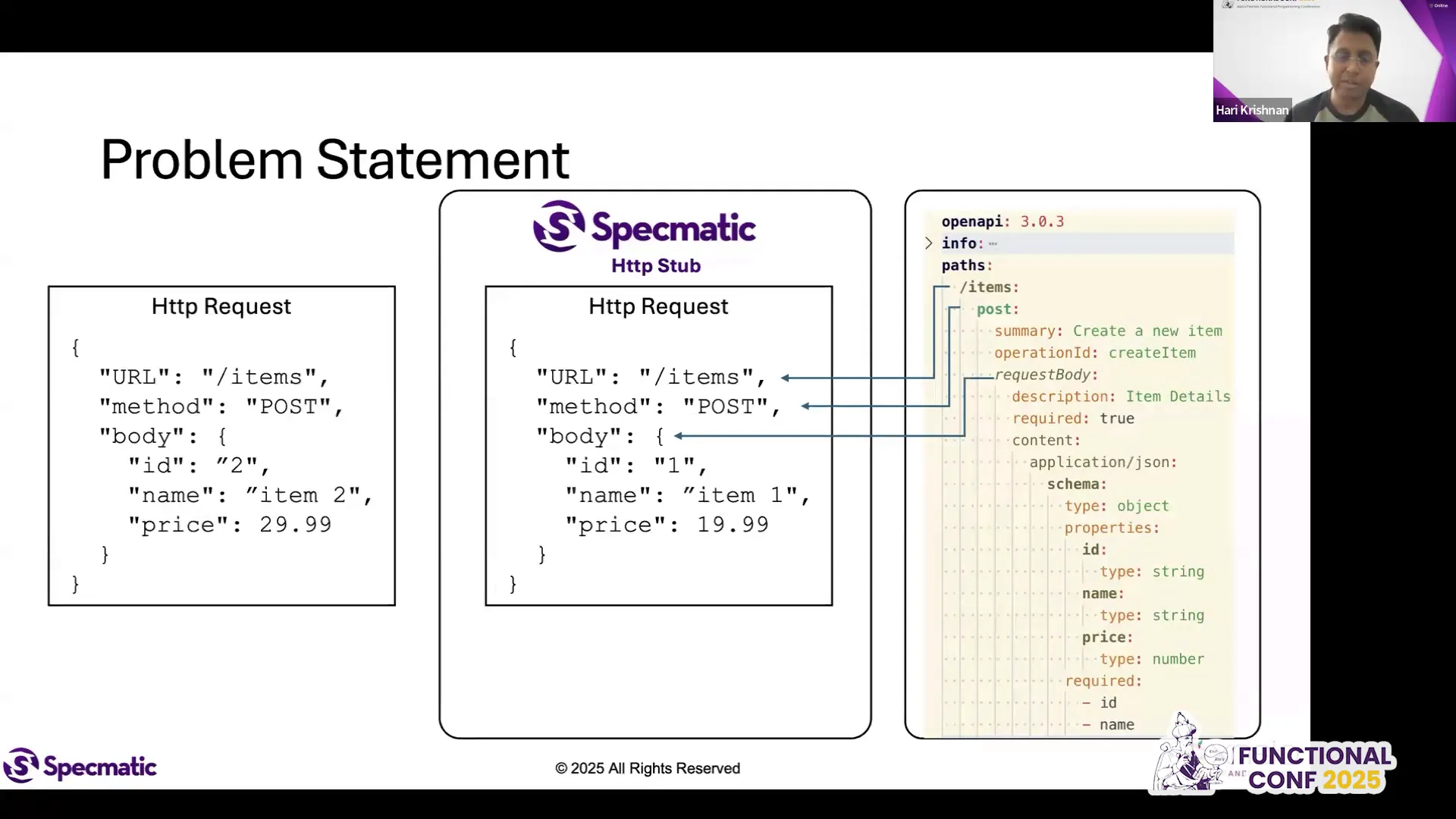
The Mental Model of Error Handling
When conceptualizing error handling, it’s essential to have a clear mental model. Traditionally, developers may think in terms of matching requests—first the URL, then the method, and finally the body. However, this approach often leads to an overemphasis on failures rather than successes.
By shifting our focus, we can create a mental model that prioritizes the happy path. This means defining success upfront and ensuring that our code structure reflects that clarity.
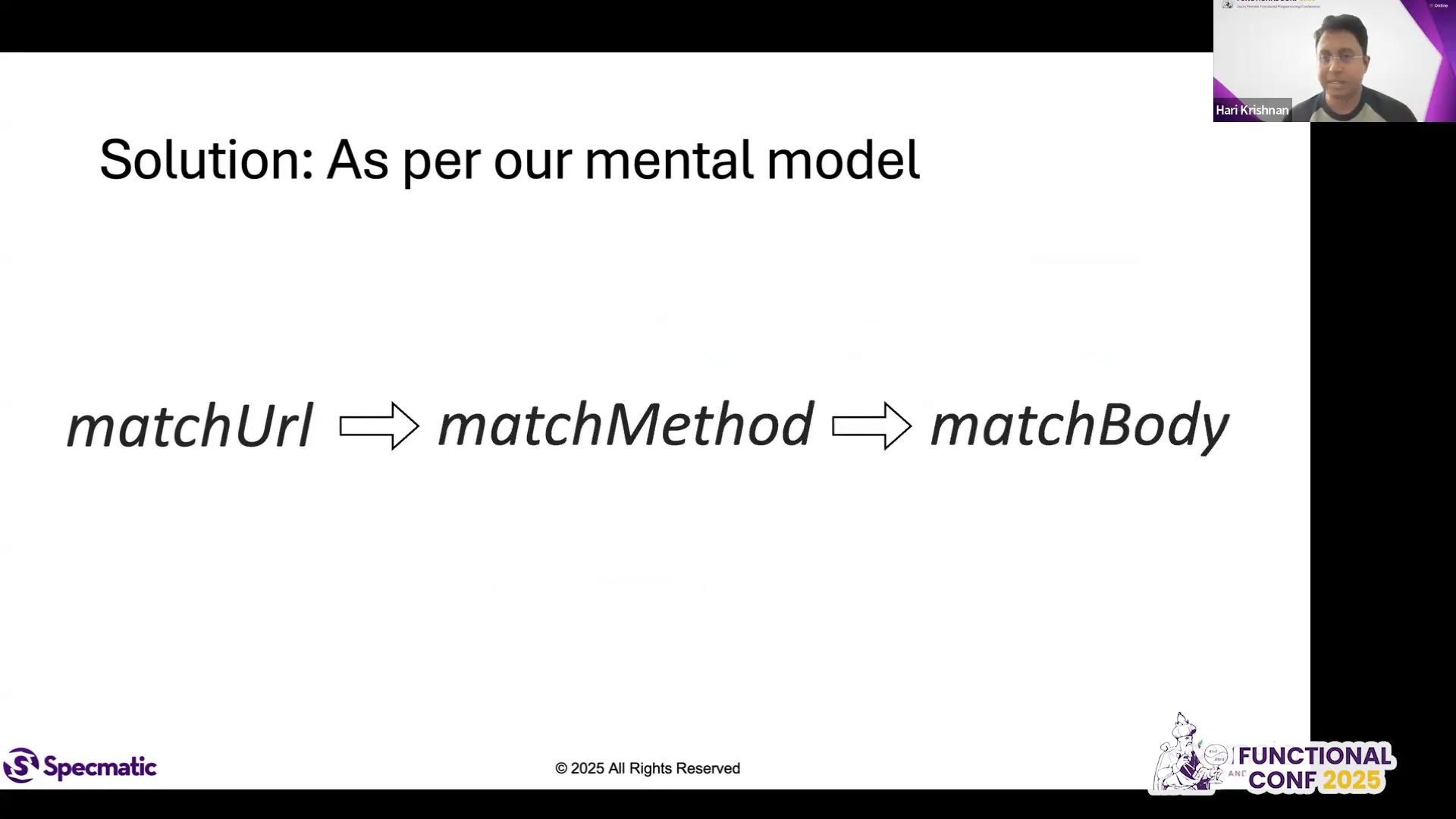
Introducing Railway Oriented Programming
Railway Oriented Programming (ROP) offers a refreshing perspective on handling errors in functional programming. By adopting a dual-track approach, ROP distinguishes between successful and erroneous outcomes. This method allows developers to define a clear path for success while simultaneously managing potential errors.
Scott Vlastin’s analogy of ROP elegantly illustrates this concept. Instead of viewing error handling as a series of failures, we can visualize it as two parallel tracks—one for success and one for failure. This not only enhances readability but also improves maintainability.
- Clear Separation: Success and failure paths are distinctly defined, reducing confusion.
- Improved Readability: Code becomes more intuitive, allowing developers to follow the logic easily.
- Enhanced Testing: Clear paths for success and failure facilitate more straightforward testing scenarios.

The Two Track Analogy Explained
The essence of Railway Oriented Programming (ROP) lies in the two-track analogy. Imagine two distinct tracks: one represents the happy path, where everything functions seamlessly, while the other captures any errors that may arise. This visualization shifts the focus from a chaotic mess of conditionals to a clear, linear journey of success and failure.
In practice, success is defined by successfully matching the URL, method, and body of HTTP requests. When all conditions are met, we traverse the happy path. However, if any mismatch occurs, we quickly switch to the error track, allowing us to handle failures gracefully.
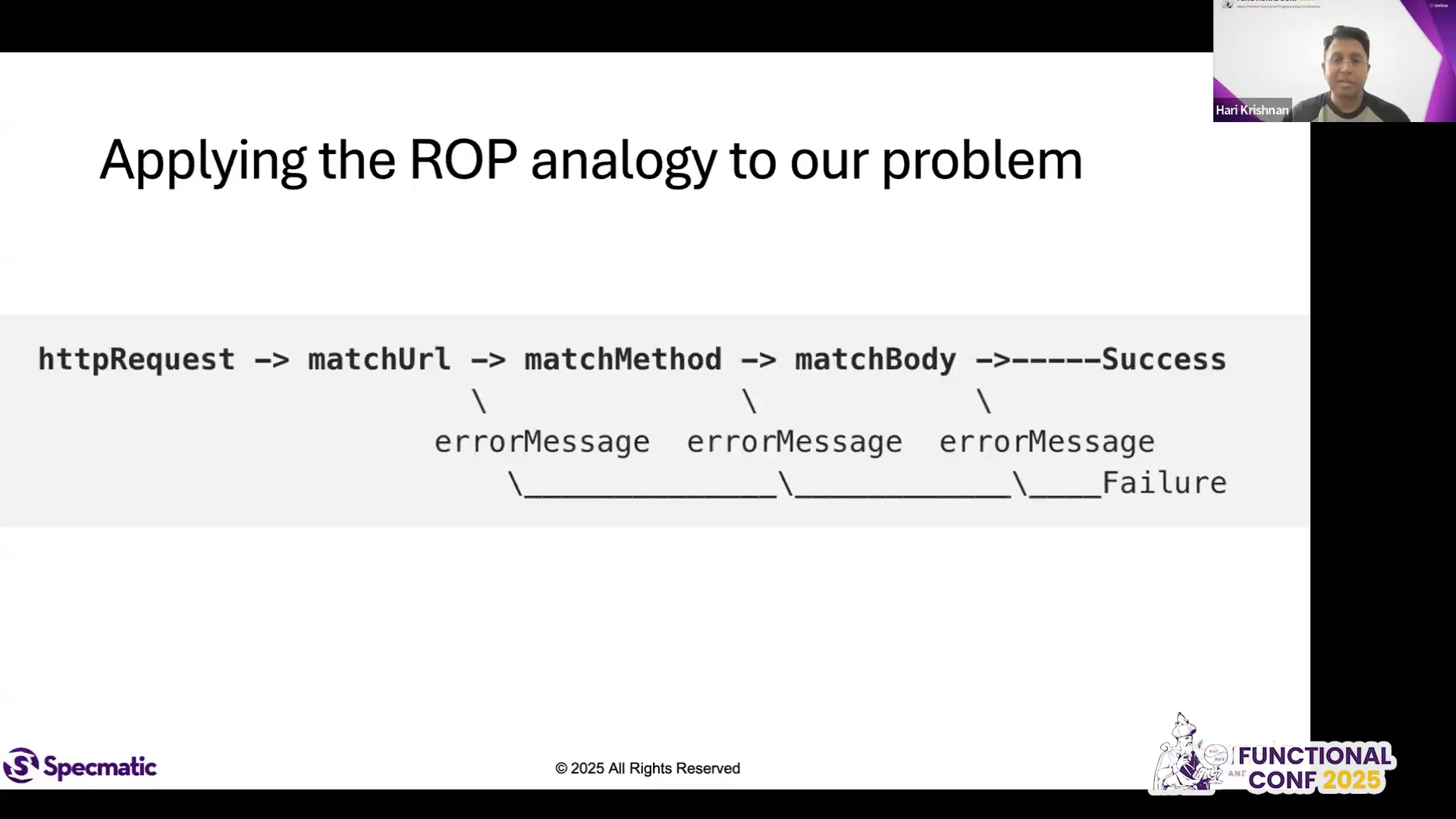
Code Walkthrough: Initial Implementation
Let’s delve into the initial implementation of our error handling. It begins with straightforward test cases. The first test checks if the URL, method, and body of two HTTP requests match. If they do, the test asserts that the result is true, indicating success. Conversely, any mismatch—whether in the URL, method, or body—results in a corresponding failure.
This procedural approach, while functional, can become cumbersome. The use of guard clauses allows for quick returns on mismatches, but it can lead to a cluttered codebase. The resulting structure often lacks clarity, making it harder to follow the success path.

Refactoring to a Functional Approach
Transitioning to a functional approach requires breaking down our methods into smaller, composable pieces. The first step involves method extraction, where we create methods for matching the URL, method, and body. Each of these methods returns a result type that encapsulates success or failure, allowing us to maintain clarity in our code.
While this refactoring may increase the number of lines, it significantly enhances the readability of the code. By defining clear methods, we set the stage for composing these functions later on, paving the way for a more elegant solution.
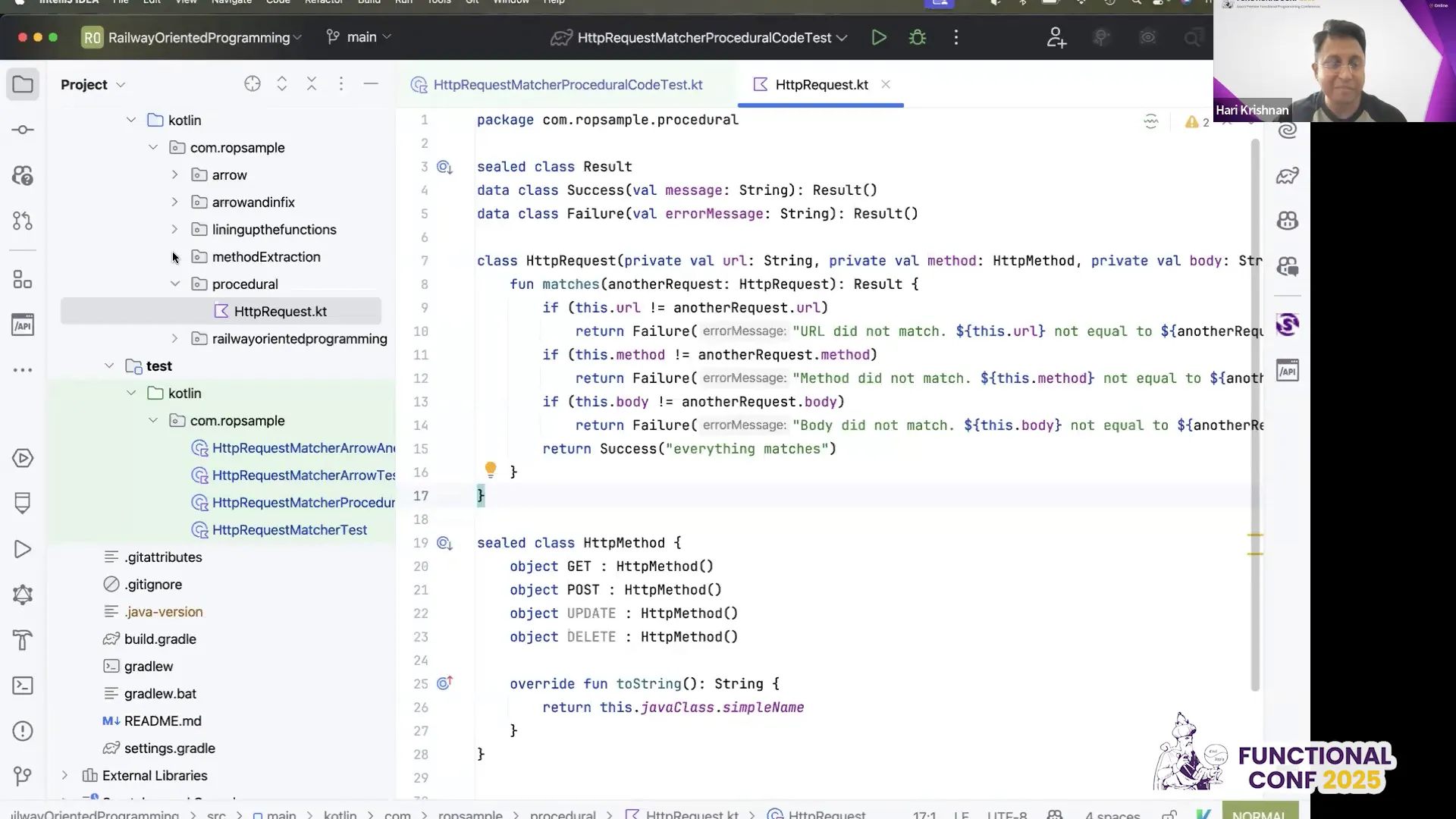
Method Extraction for Composability
With our methods extracted, the next step is to line them up logically. Initially, we might find ourselves nesting if conditions, which can lead to less readable code. However, this is a necessary step in our journey toward achieving ROP.
The goal here is to ensure that each method can be called sequentially, where the success of one method leads to the next. By structuring the code this way, we prepare ourselves for the introduction of the ‘then’ operator, which will allow us to chain these methods together seamlessly.
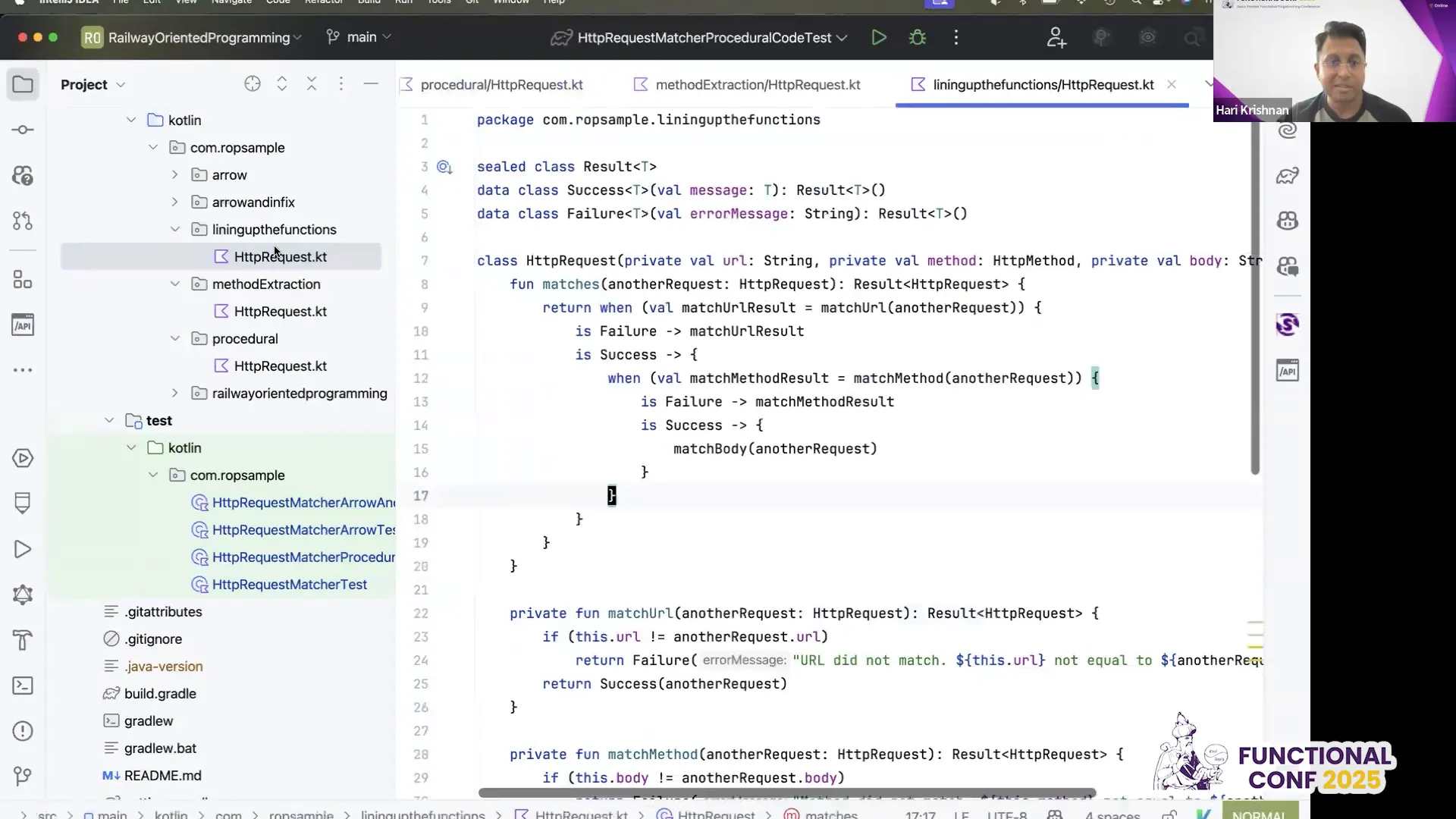
Introducing the ‘Then’ Operator
The ‘then’ operator is a pivotal element in ROP, allowing us to create a chain of operations that flow smoothly from one to the next. Each method can be linked, ensuring that if a method returns a success, the next method in line is executed. If any method encounters a failure, we can immediately short-circuit to the error handling logic.
This operator not only simplifies our code but also enhances its readability. Instead of dealing with convoluted nested conditions, we can clearly see the sequence of operations laid out. This clarity is crucial for anyone reading or maintaining the code in the future.
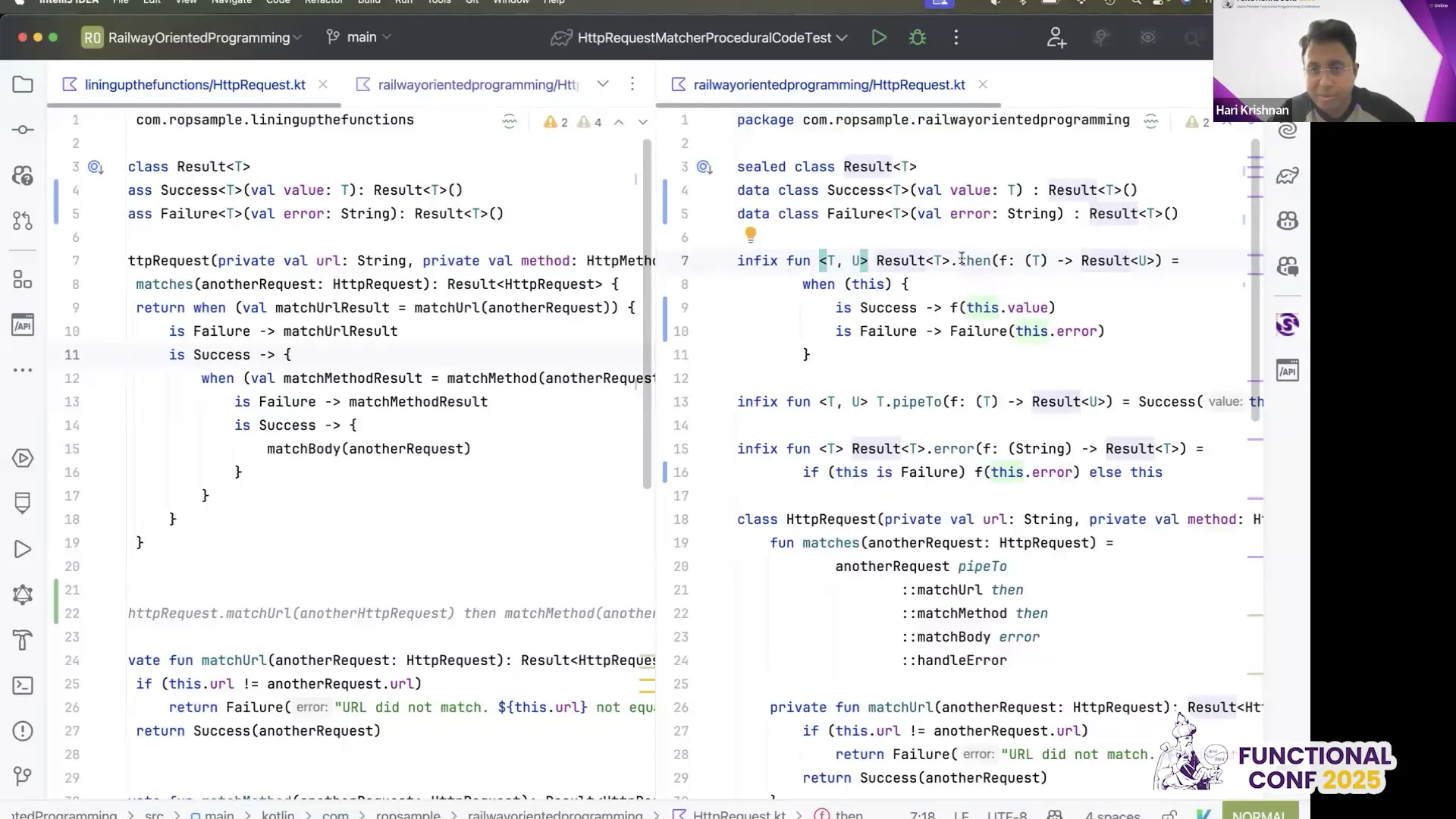
Utilizing ArrowKT for Enhanced Functionality
To further enhance our implementation, we can leverage the ArrowKT library, which brings a wealth of functional programming capabilities to Kotlin. ArrowKT streamlines the process of working with data types and enhances our ability to compose functions effectively.
By integrating ArrowKT, we can utilize its powerful abstractions, such as Option and Either, to manage success and failure paths more elegantly. This library allows us to focus on the logic of our application rather than the intricacies of error handling, making our code cleaner and more maintainable.
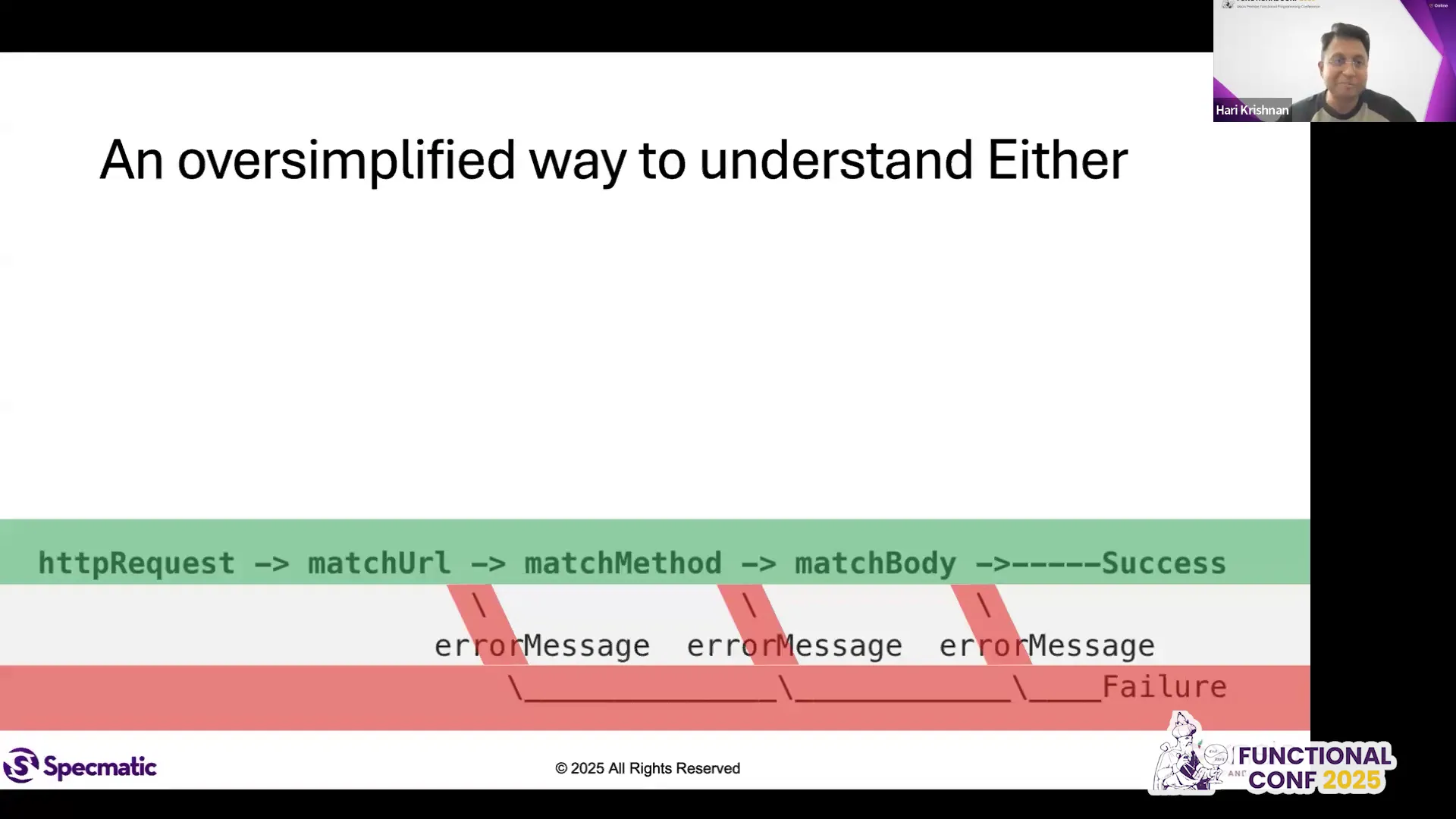
Flat Map and Fold: Key Concepts in Monads
The concepts of flat map and fold are essential when working with monads, particularly in the context of Railway Oriented Programming. A monad can be understood as a wrapper around raw values, enabling transformations while maintaining a clear structure. In our case, we are dealing with two raw values: the HTTP request and the error message.
The flat map function is crucial here. It takes a function that accepts the unwrapped value of the either monad and applies it to the value contained within. The output must return another monad, thus allowing for seamless chaining of operations.
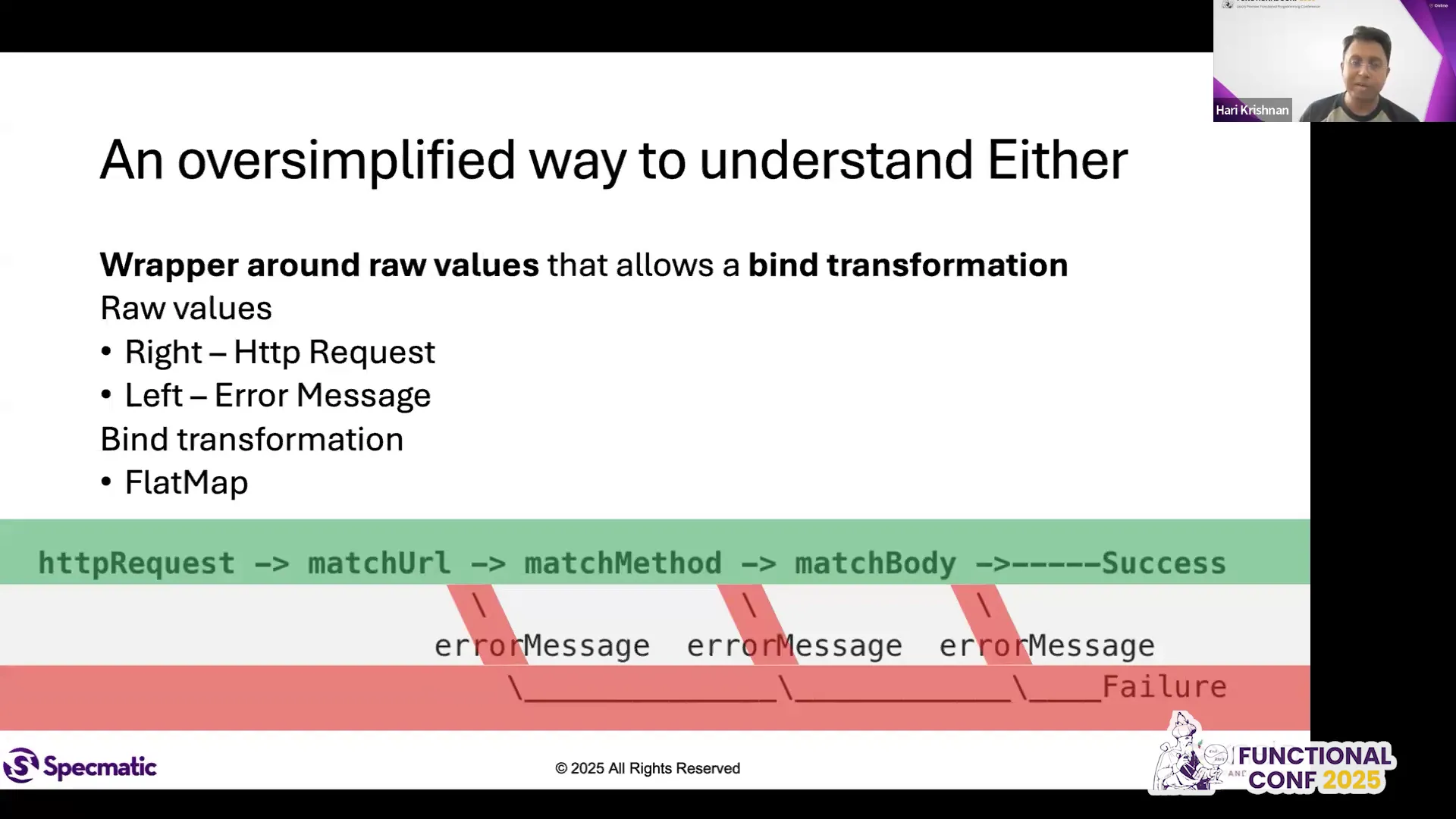
For example, when we use flat map to process an HTTP request, it ensures that if the request is successful, we can proceed to the next function in the chain. If there’s an error, we can handle it appropriately without complicating the overall logic. This chaining mechanism is what makes flat map a powerful tool in functional programming.
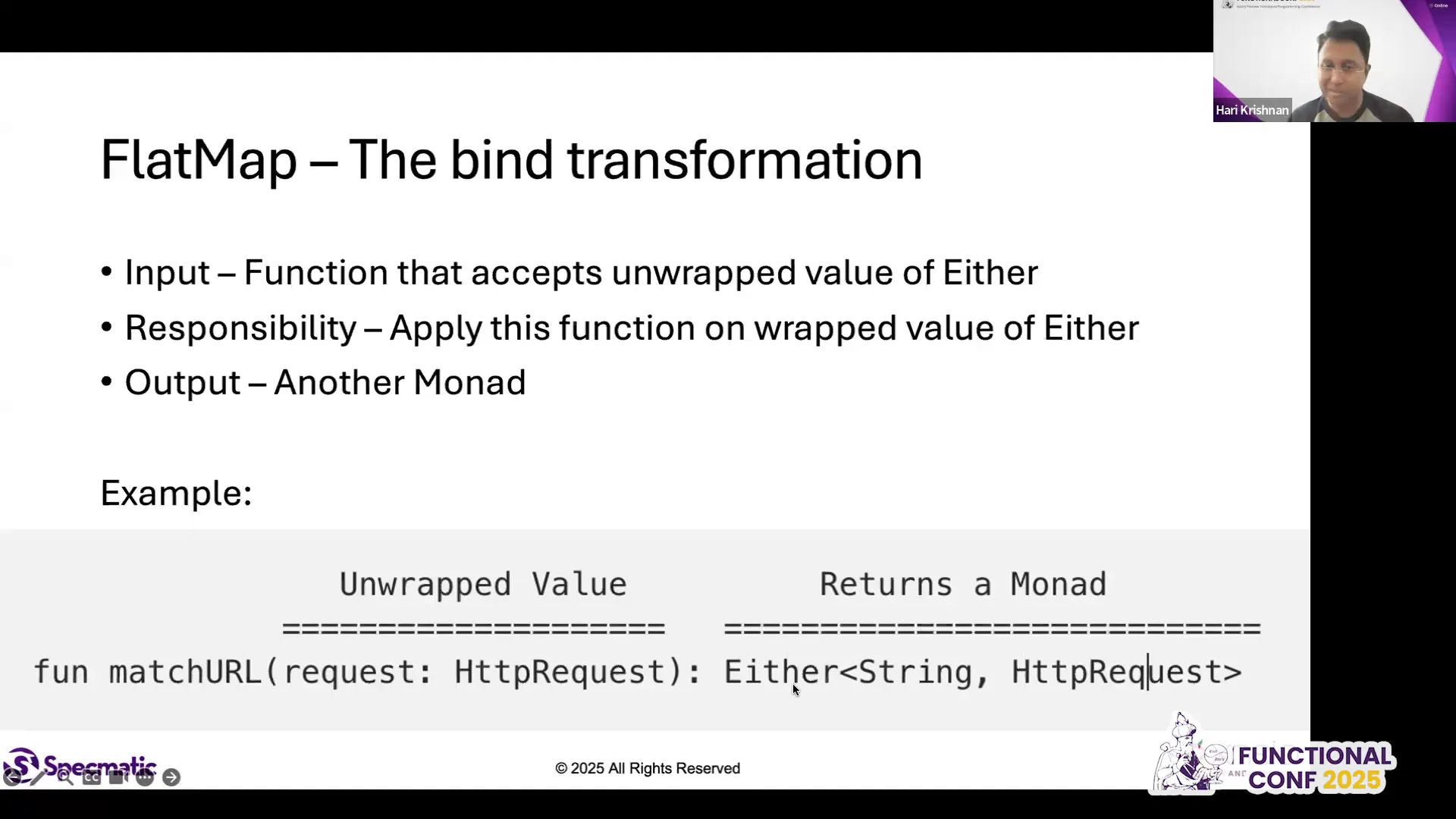
Moreover, the either monad is designed to be right-biased. This means that the flat map operator will only apply the function to the right side, which represents success. If the operation fails, we can easily switch to error handling, ensuring that our code remains clean and maintainable.
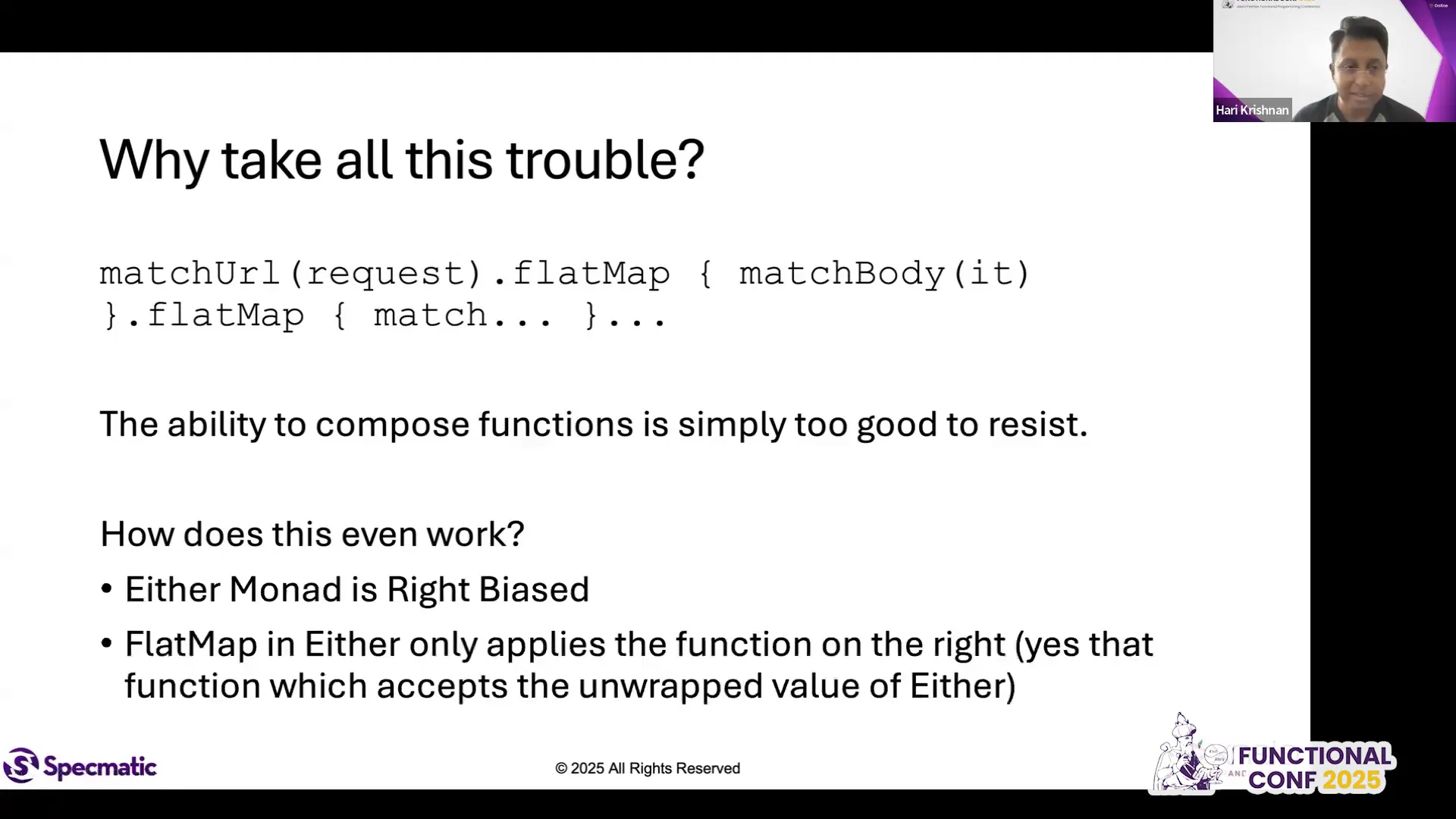
Final Implementation and Reflections
After refining our approach to error handling, the final implementation showcases a clear separation between the business logic and the machinery of the code. This enhances not only readability but also maintainability. The focus is on the core business operations, with the error handling logic elegantly tucked away.
Ultimately, the goal is to achieve a balance between functionality and clarity. The final structure allows us to compose functions without the clutter of nested conditionals. This transformation has been a journey of continuous improvement, leading to reusable code that minimizes error checks.

Q&A Session: Addressing Disadvantages of ROP
While Railway Oriented Programming offers significant advantages, it’s essential to acknowledge its limitations. One common question is about the disadvantages of this programming model. It’s crucial to assess whether the complexity introduced by ROP is justified.
If you’re working with a simple use case involving only a couple of functions, the overhead of adopting ROP may not be worth it. The return on investment must be considered. However, when dealing with a chain of functions, especially in complex business scenarios, the benefits of clarity and maintainability become apparent.
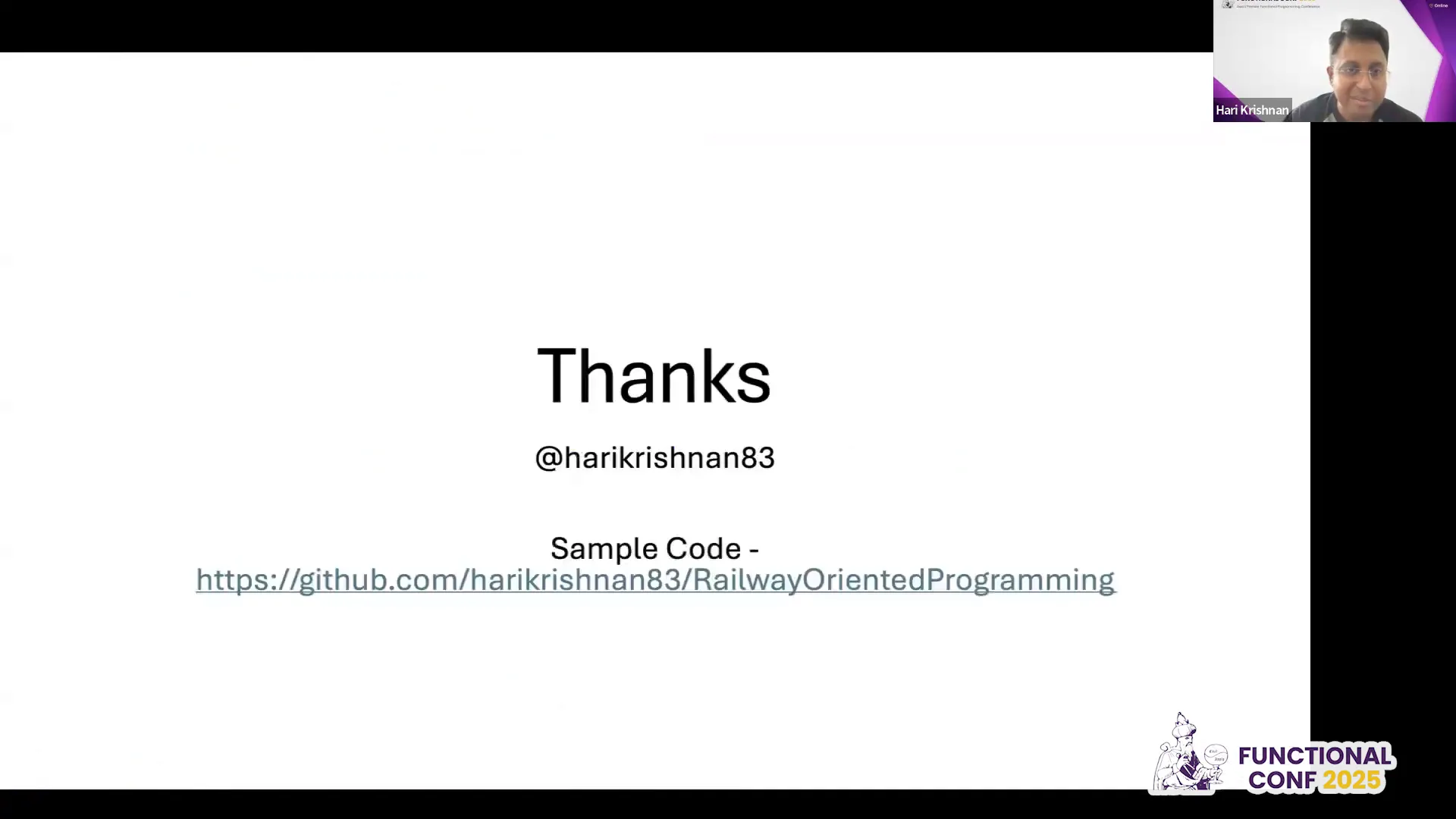
Conclusion and Resources
In conclusion, embracing Railway Oriented Programming in Kotlin can significantly enhance your error handling strategy. By separating success and failure paths, we create cleaner, more maintainable code. The use of concepts like flat map and fold allows for elegant function composition, while the integration of libraries like ArrowKT can further streamline the process.
For those interested in diving deeper into ROP, a wealth of resources is available. From documentation to community discussions, there’s much to explore. Always remember to assess the complexity of your use case before fully committing to this approach.
FAQ Section
- What is Railway Oriented Programming? ROP is a functional programming paradigm that separates success and failure paths to simplify error handling.
- How does flat map work in ROP? Flat map allows for chaining operations on the right side of the either monad, ensuring that errors can be handled gracefully.
- When should I use ROP? ROP is beneficial when dealing with complex chains of functions where clarity and maintainability are critical.
- Are there any downsides to using ROP? For simple use cases, the added complexity may not be justified. Always consider the return on investment.





